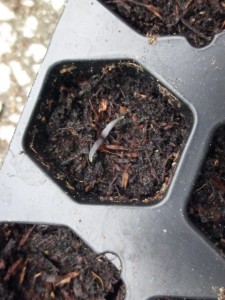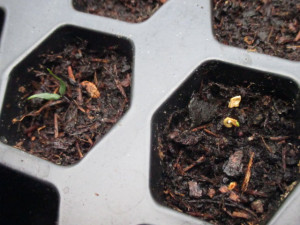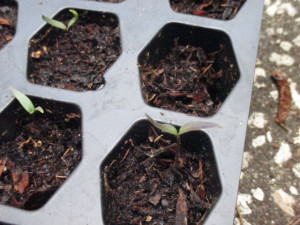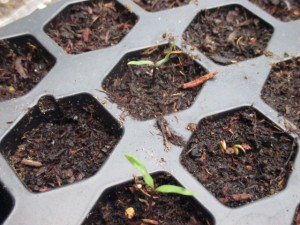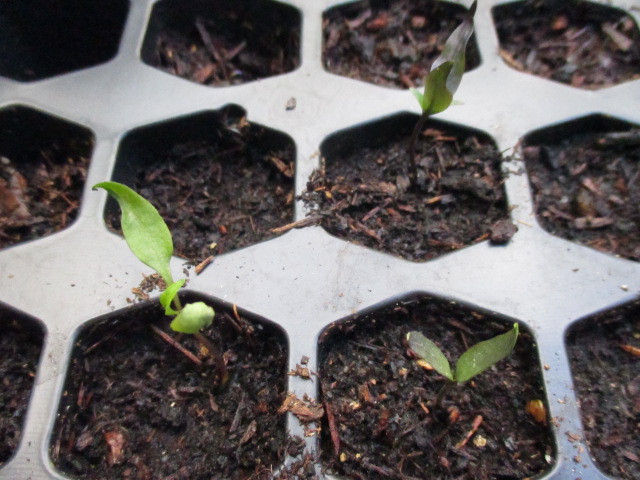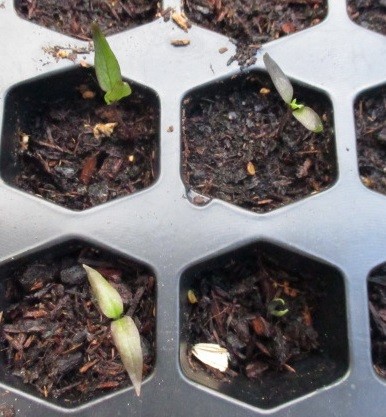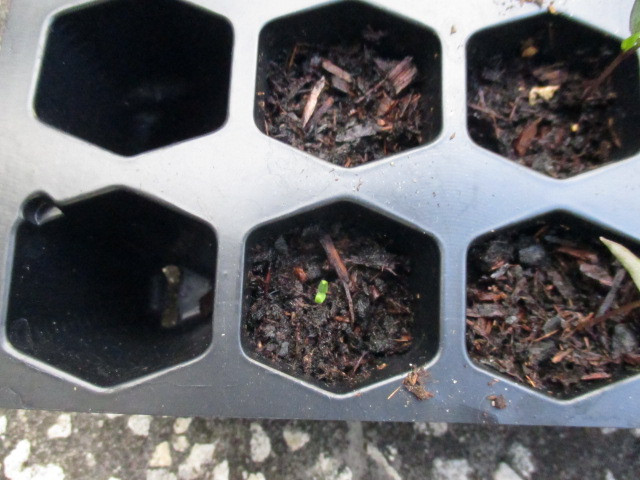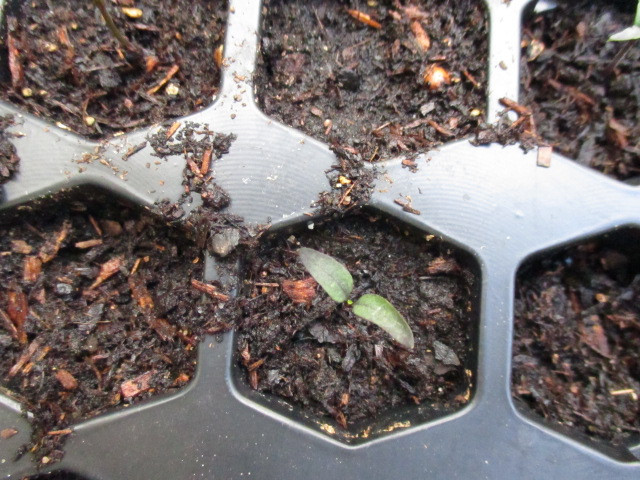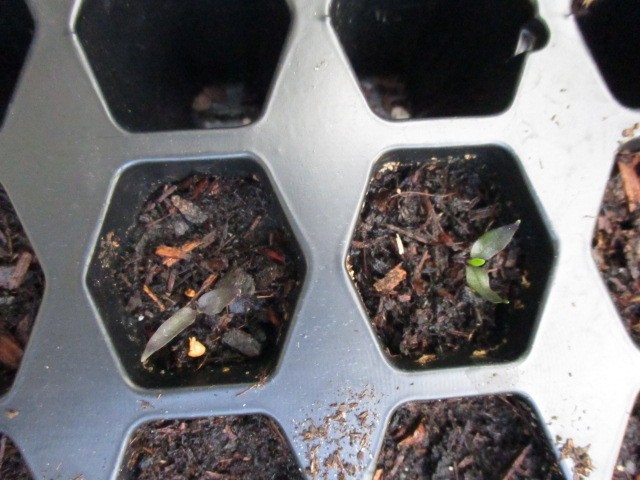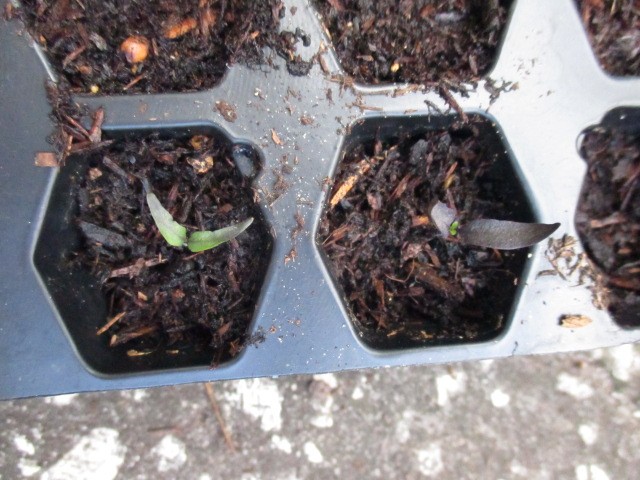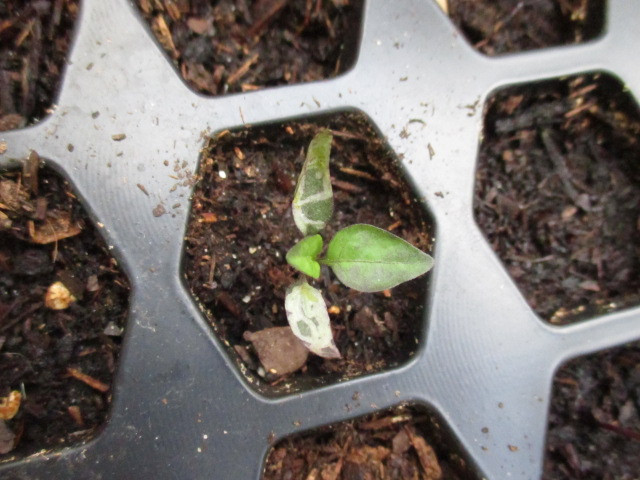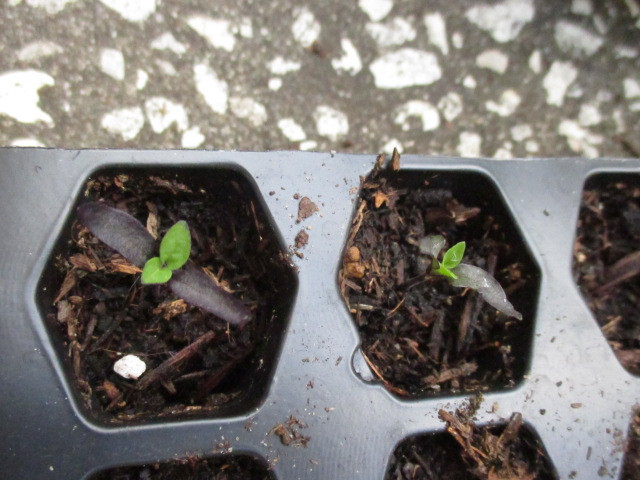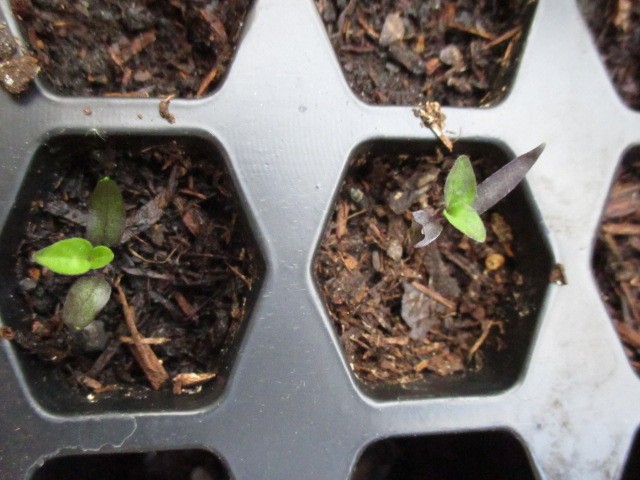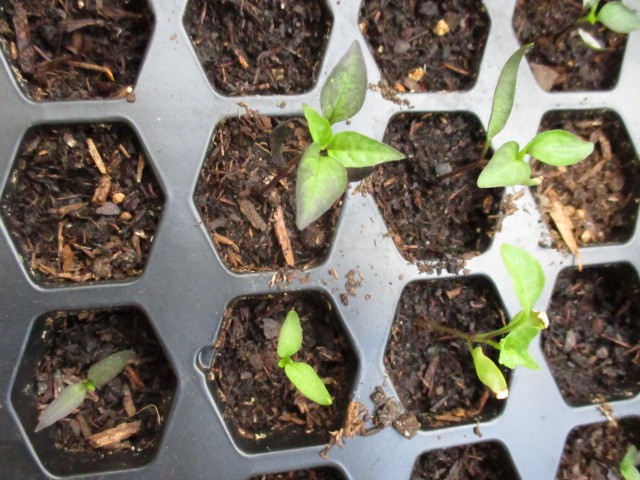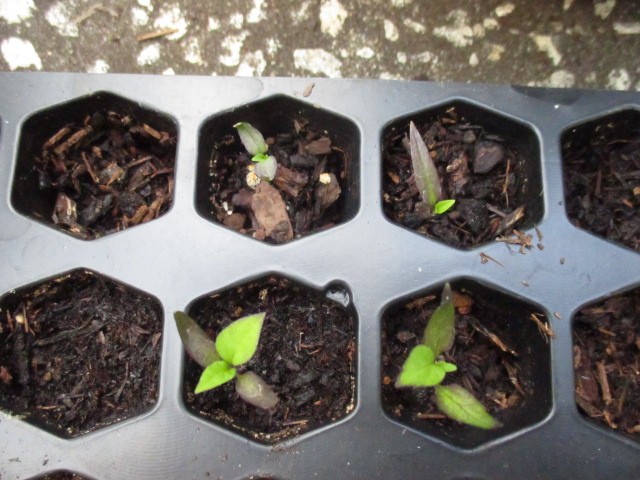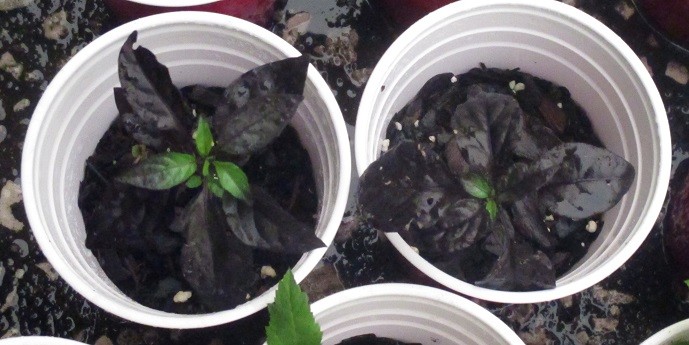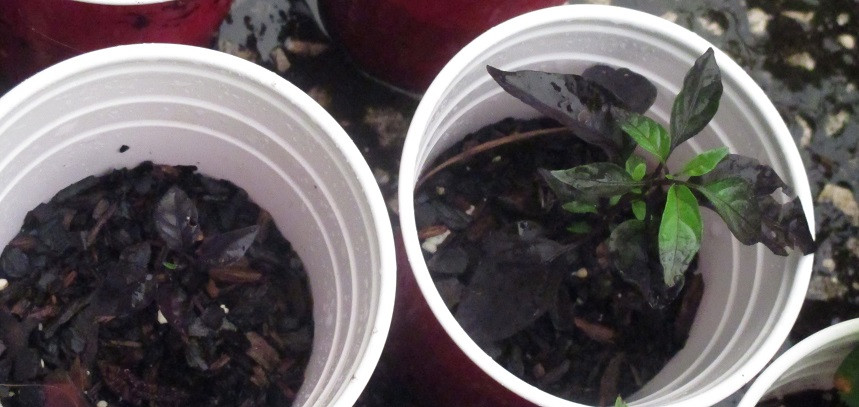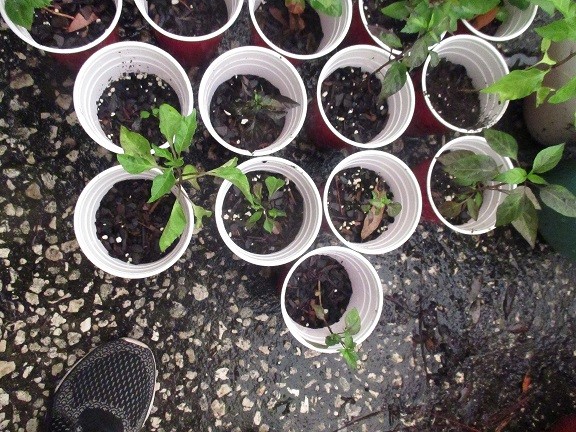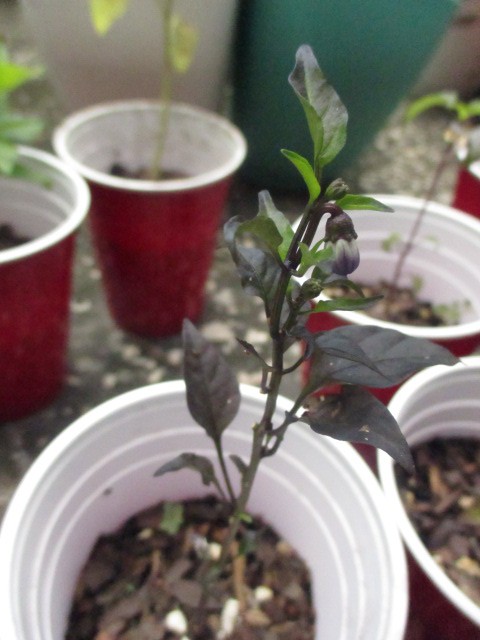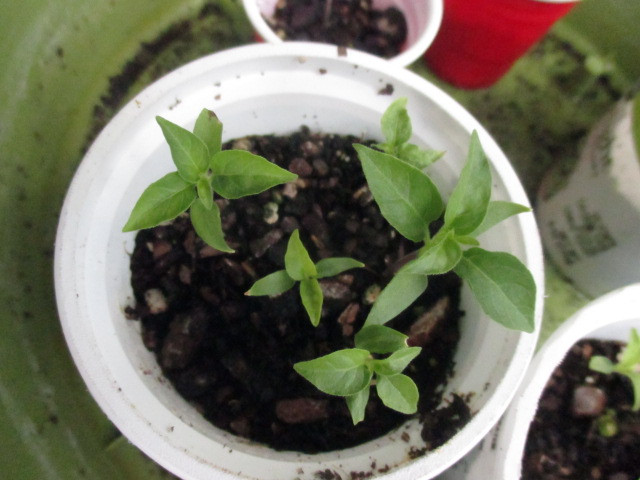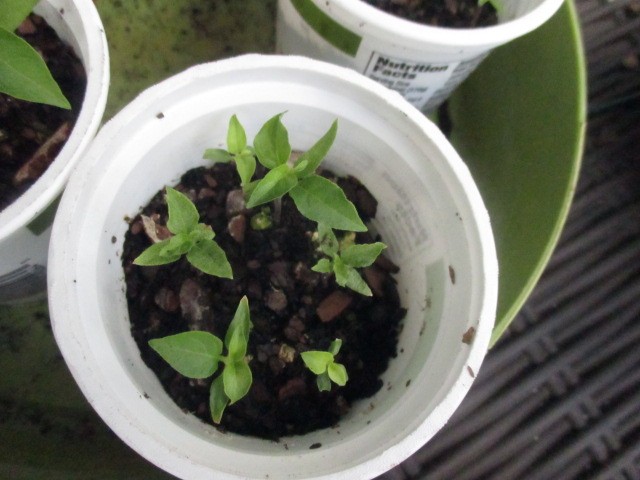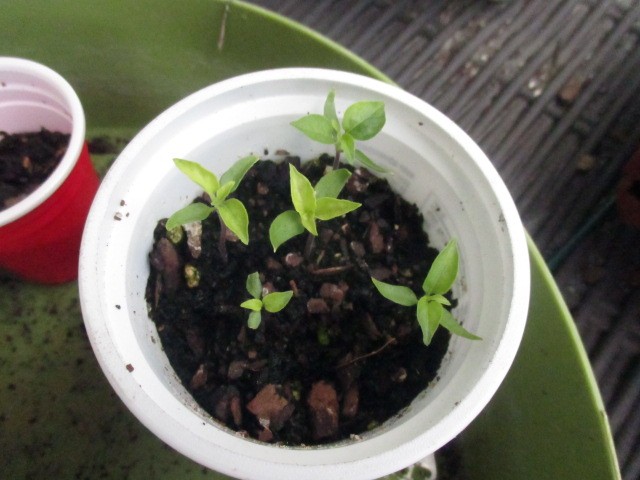Now that I've finished moving out of my old apartment with its north-facing sunless balcony and into a single-story apartment with a wonderfully sunny patio - hence the title of this grow log - I'm trying to grow more chiles again! (In addition to other sun-appreciating plants.)
I started another guilt-trip batch of habanero seeds - the children of at least one of my earliest habaneros, who died last year - right before leaving the old apartment, about a month ago. Some of them sprouted roots within one week, and now a few of them are growing their second set of true leaves. Partly because those seedlings' extremely rapid growth surprised me, this log is actually for keeping track of the growth of the seeds I just started.
I wrapped the following in damp paper towels and put them in sealed plastic bags -
-thirteen Black Pearl chile seeds
-twelve Purple Cayenne seeds
-seven Trinidad VV7 Scorpion seeds
-twelve scarlet runner beans
Here's the chile seeds bag -
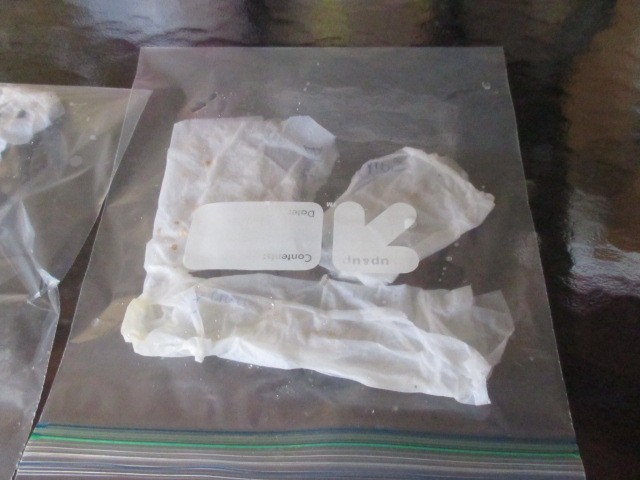
...and here are the beans -
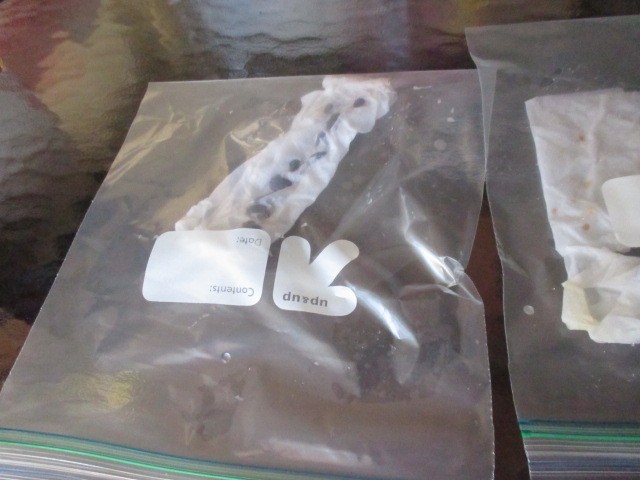
After the habaneros' quick growth, I'll check on these at least every other day.
I started another guilt-trip batch of habanero seeds - the children of at least one of my earliest habaneros, who died last year - right before leaving the old apartment, about a month ago. Some of them sprouted roots within one week, and now a few of them are growing their second set of true leaves. Partly because those seedlings' extremely rapid growth surprised me, this log is actually for keeping track of the growth of the seeds I just started.
I wrapped the following in damp paper towels and put them in sealed plastic bags -
-thirteen Black Pearl chile seeds
-twelve Purple Cayenne seeds
-seven Trinidad VV7 Scorpion seeds
-twelve scarlet runner beans
Here's the chile seeds bag -

...and here are the beans -

After the habaneros' quick growth, I'll check on these at least every other day.

